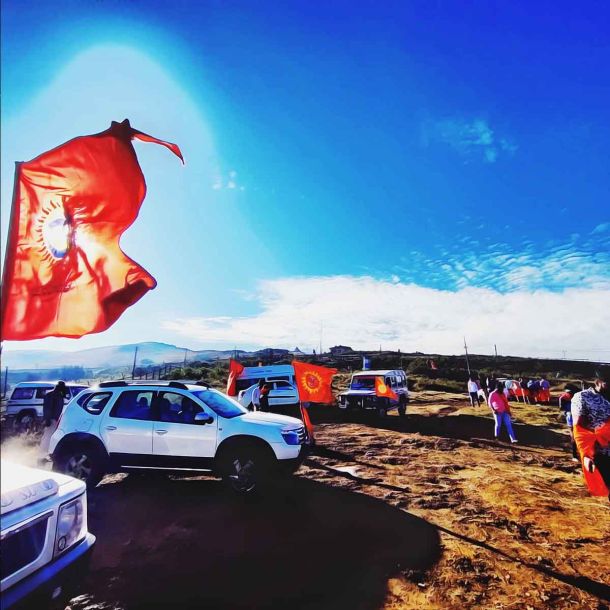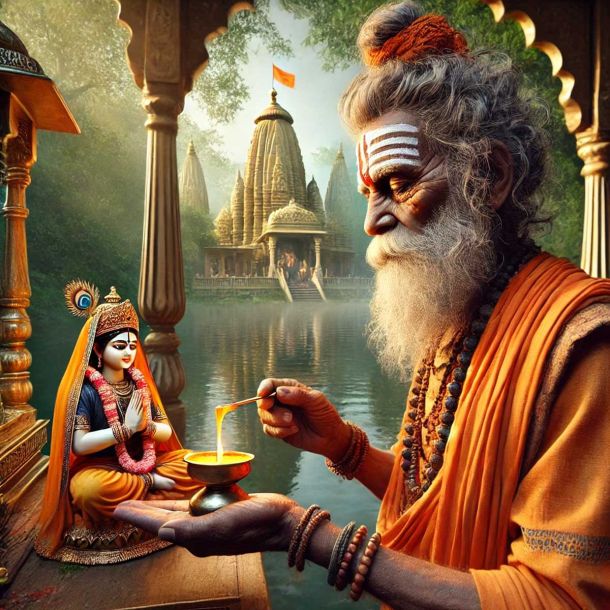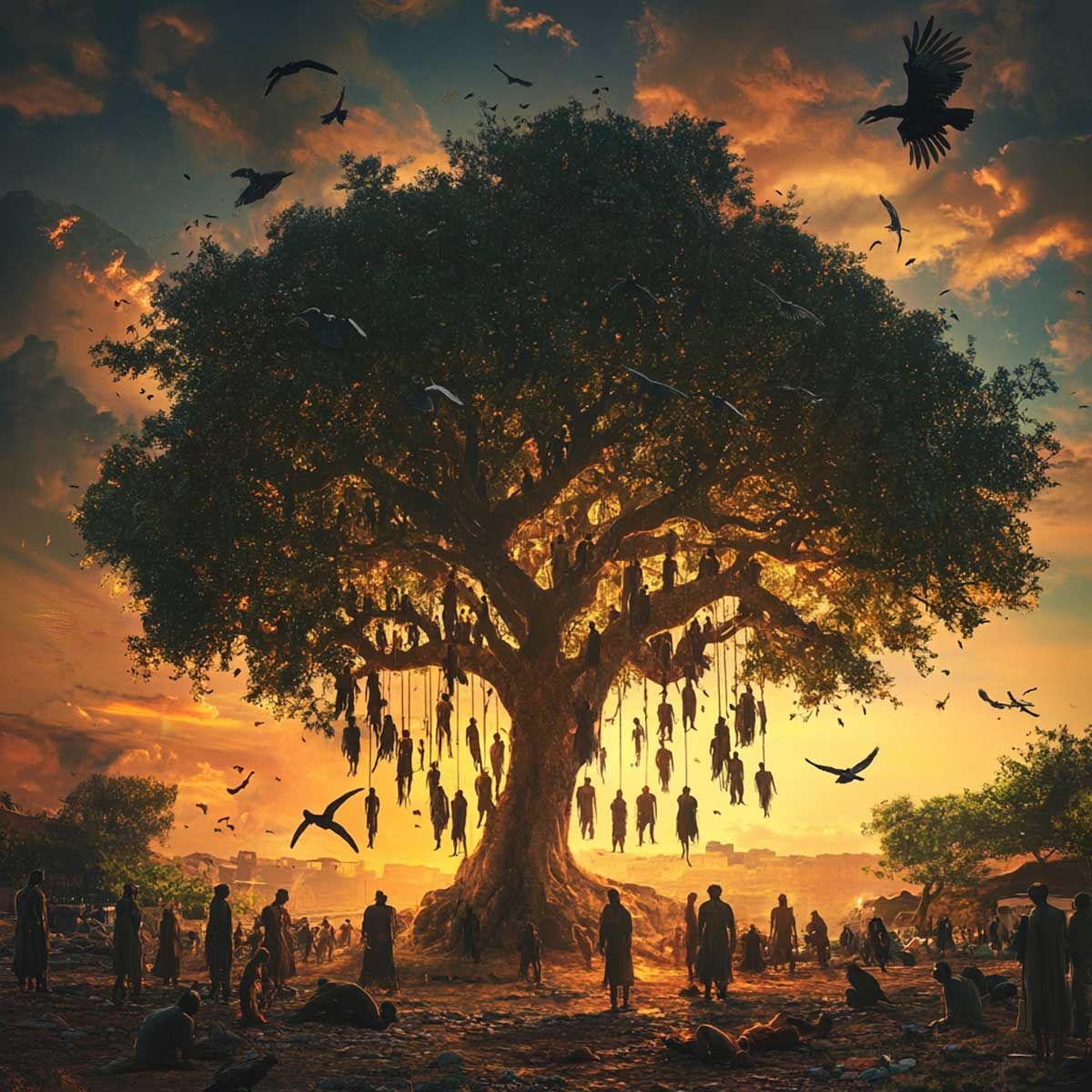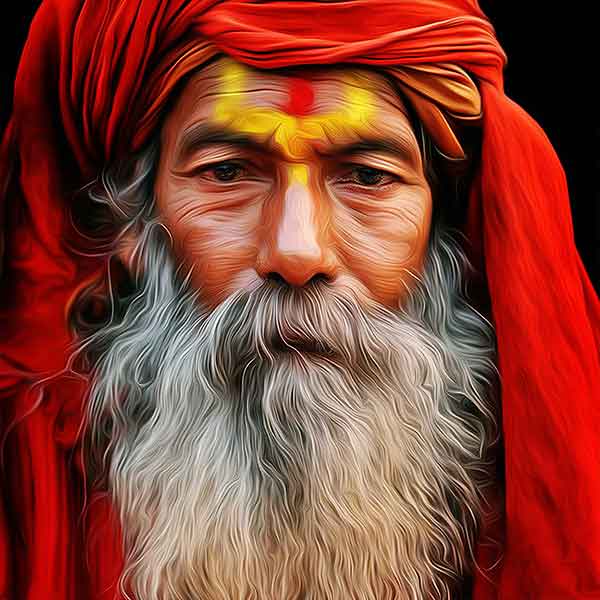More Coverage
Twitter Coverage
Satyaagrah
Written on
Satyaagrah
Written on
Satyaagrah
Written on
Satyaagrah
Written on
Satyaagrah
Written on
Join Satyaagrah Social Media
"Feel the mystic air around, Listen closely, and you'll hear its sound": Snake Shrine of Kavaledurga Fortress - Journey through the captivating realm of semi-divine Nagas and immerse in a rich cultural tapestry across South and Southeast Asian legends
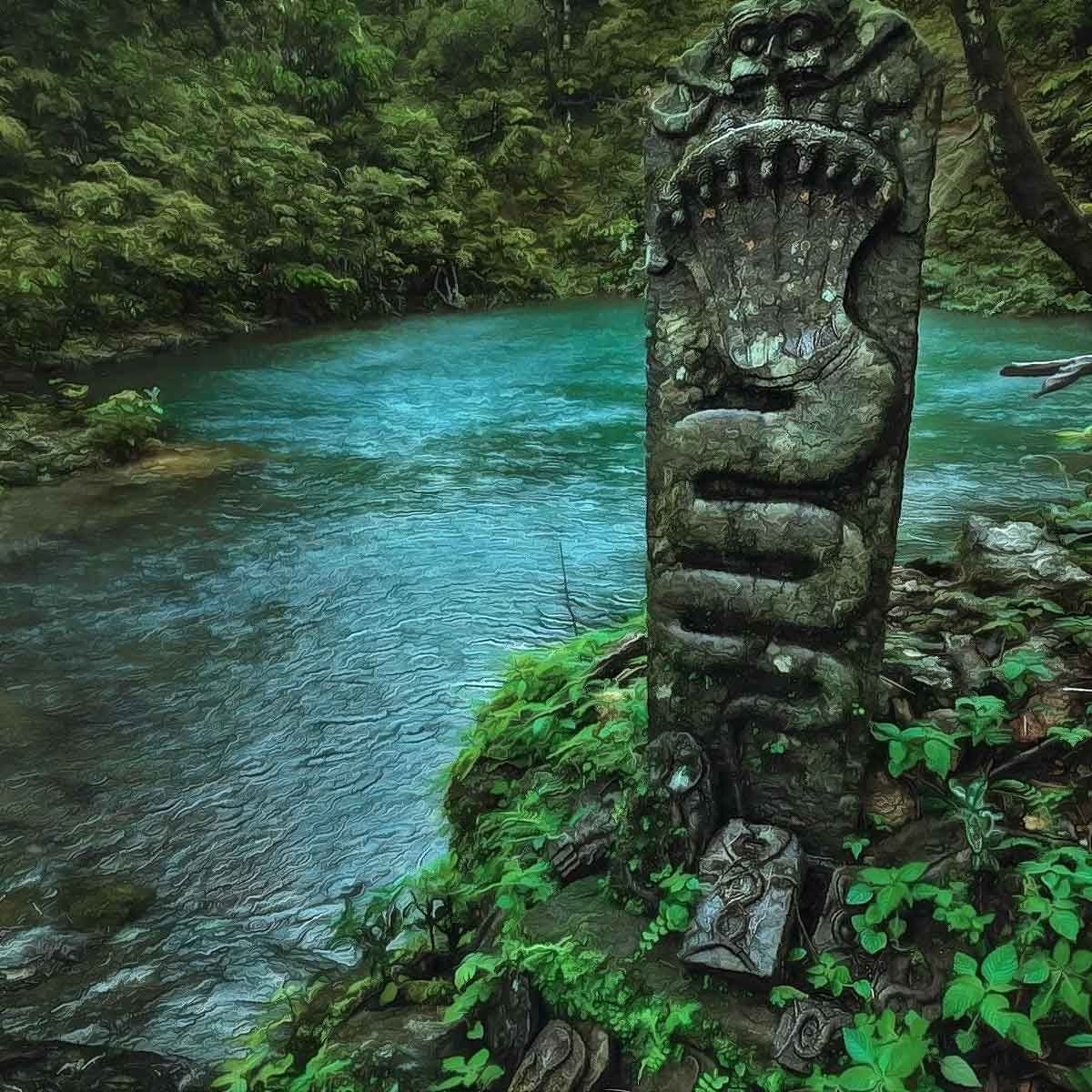
The Malnad region of Karnataka has historically been a significant arena for numerous dynasties, their respective realms, and capitals throughout the post-medieval era. One can imagine how the towering hills, enclosed by almost insurmountable jungles, provided a safe and secluded space, making it an ideal location for erecting fortresses. Among these fortresses, one of particular prominence is the Kavaledurga Fortress, which harbors a mystic Nagadevathe or a snake shrine, traditionally believed to protect the palace treasures.
|
In its prime, Kavaledurga was a grand spectacle, featuring a seven-tiered palace, a testament to the architectural prowess of the period. Sadly, what once stood as a symbol of splendor, now remains a crumbling structure, a mere shadow of its former self.
The Kavaledurga Fortress, perched atop a lofty rocky hill near Thirthahalli in the Shimoga district, was a masterpiece crafted by the rulers of the Belagutti region as early as the ninth century. The fortress bore witness to the power struggles of its time when local chieftains Thole Thamma and Mundige Thamma seized control, burdening the local populace.
Eventually, the Keladi dynasty kings, who initially served as vassal rulers under the expansive Vijayanagar empire, became independent following the empire's downfall. With the persistent threat of Mughal invasions, they relocated their capital multiple times, from Keladi to Ikkeri, Bidanur, and finally, to Kavaledurga. This strategic move transformed Kavaledurga into their last bulwark until the formidable Hyder Ali vanquished the fortress.
|
Remnants of a Glittering Era
Known also as Bhuvanagiri, the Kavaledurga Fortress was fortified by Hiriya Venkatappa Nayaka. He was instrumental in reinforcing the fortress with seven entrances, five of which survive till date, and erecting a palatial edifice with seven tiers. With the passage of time, however, the fortress lost its significance, and the palace's grandeur faded into obscurity. Today, the remnants of this bygone era narrate stories of a golden past.
Interestingly, the Archaeological Survey of India (ASI) has shown considerable interest in restoring the fortress, excavating buried artifacts, and reconstructing the palace. Bhaskar Rao, an ASI official, has provided detailed insights into the palace's historical and architectural significance.
A journey uphill along a cobbled path leads to the first of the five entrances, each marked by two sizable round bastions. On the left side of this path stands a four-feet tall stone image of the seven-hooded Nagadevathe, believed to guard the palace's treasures. Excavations are currently underway at the nearby Nagatheertha site.
The fortress's second entrance, known as Nagari Bagilu, played a crucial role in disseminating critical news such as births, deaths, or imminent enemy attacks. The news was traditionally conveyed through the beating of drums. The fortress's design was strategic - these doors were placed perpendicular to the path, a defensive tactic to halt charging elephants, which were often used in attempts to breach the fortress doors.
Climbing the wide steps towards the third entrance opens up a field view. On the left stands the unique Kashi Vishwanatha temple, adorned with two Dhwajasthambhas (pillars), showcasing the distinctive Keladi architecture featuring carvings of snakes, the sun, the moon, and three-headed parrots. The temple also houses a Shivalinga, believed to have been brought from Kashi, placed unusually on a left-oriented pedestal.
Directly opposite the temple is a rocky outcrop, bearing inscriptions and a small shrine with images of deities Lakshmi and Narayana. The path then leads westward, past two rectangular stone tanks used for storing oil and ghee, towards the palace entrance.
|
The Once Majestic Palace
Sadly, the once glorious palace is now but ruins. However, efforts are underway to resurrect its grandeur, with workforce employed to erect strong pillars. The king used to address the public in a spacious hall beyond which lay chambers for the King, Queen, and attendants. The unique small-sized bricks used in the kitchen area still draw attention.
The fortress also had an efficient water distribution system, using sections of stone pipes with rings that fit into each other, creating a channel. The stone stove, which could accommodate five vessels at a time, is a reflection of the ingenuity of the people of the era.
An attractive stepped pond is located at the south-western corner, which likely served as a swimming pool. Ascending the steps and moving westward, one reaches the final entrance of the fortress.
Upon reaching the top of the hill, there lies the Gadha Theertha, shaped like a mace. This is believed to be a mark of the Pandavas' exile period when Bhima is said to have struck his mace to source water. The hill's summit is adorned with a massive boulder and a temple dedicated to Shikhareshwara. Together, the shrine and the boulder form a Shivalinga-like structure. The location offers a 360-degree panoramic view of spectacular vistas.
Witnessing a sunrise or sunset against the backdrop of Varahi dam to the west, its backwaters, Kundadri hill to the south, and a distant, hazy view of the Kodachadri peak on the northern horizon, is an experience etched in memory.
As one descends, a sloping path leads to a tower, originally designed to monitor potential intruders. At the hill's base is a Veerashaiva Math, patronized by the Keladi rulers, where free food is served to devotees. The town of Kavaledurga also houses a Marikamba temple and a dozen other shrines, each with its own tale to tell.
A visit to the Kavaledurga Fortress is akin to stepping back in time, immersing oneself in the golden days of the Keladi dynasty.
Kavaledurga is situated at a distance of 18 kilometers from Thirthahalli, which is well-connected by bus to Shimoga, Bangalore, and other cities. The closest railway station is in Shimoga, roughly 60 kilometers away
|
Snake shrine of Kavaledurga🐍🍀, Tirthahalli, Karnataka
The mystical realm of South Asian and Southeast Asian religious and mythological traditions is replete with myriad enchanting entities. Among these, the Nāgas or Nagi hold a distinctive and enthralling position. Known for their semi-divine status, these fascinating creatures are often depicted as half-human and half-serpent beings. Their abode is believed to be in Patala, the netherworld, where they live a divine existence. Interestingly, these extraordinary beings are said to possess the capability to occasionally transform into human form.
In the context of gender, a female Nāga is referred to as a "Nagi", "Nagin", or "Nagini". The fascinating hierarchy within the naga community features the Nagaraja, revered as the king of nāgas and nāginis. This divine serpent society's cultural significance is widespread and profoundly embedded in the mythological traditions across South Asia and Southeast Asia. The genesis of the nāgas is linked to Rishi Kashyapa and Kadru, considered their divine parents.
Interestingly, the dwelling places of the nāgas are not limited to the Patala. The narratives around them also suggest their existence on Nagaloka, the divine realm of minor deities. Further, they are believed to inhabit various parts of the earth where humans live. The nāgas are known to be versatile in their habitat preferences. While some of them are water-dwellers, inhabiting streams or the vast expanses of the ocean, others are earth-dwellers who choose to reside in caverns.
A Glance at Noteworthy Nāgas
As we continue our exploration of this enchanting world, let's acquaint ourselves with some of the most notable nāgas.
Adishesha: Known to be the divine serpent on whom Lord Vishnu is seen in a state of deep cosmic slumber, often referred to as yoga nidra or Ananta shayana.
Vasuki: Recognized as the king of nagas, Vasuki has a significant role in Hindu mythology. He coils over Lord Shiva's neck and offered to serve as the rope to pull Mount Mandara during the Samudra Manthan (Churning of the Ocean of Milk). This epic event aimed to release the Amrita, the nectar of immortality.
Kaliya: Kaliya, a formidable serpent, is renowned for the tales where he was conquered by Lord Krishna.
Manasa: Known as the Hindu goddess of Nagas, Manasa is believed to cure snake-bites. Interestingly, she is also recognized as the sister of Vasuki.
Takshaka: Takshaka holds the position of the tribal king of the nagas in Hindu mythology.
Ulupi: She is known for her role in the epic Mahabharata, where she is portrayed as one of the wives of Arjuna.
Karkotaka: Karkotaka, a naga king, is known for his power to control the weather. According to Indian mythology, he resided in a forest near the Nishadha Kingdom and bit Nala at the request of Indra.
Mucalinda: In Buddhism, Mucalinda is known as a nāga who protected Gautama Buddha from the elements after his enlightenment.
Padmavati: Recognized as the Nāgī queen and companion of Dharanendra in Jainism.
Apalala: Apalala is revered as a Nāga in the Buddhist religion.
Shwe Nabay (Naga Medaw): She is recognized as a goddess or a Nat spirit in Burmese animistic mythology. According to popular belief, she married a Naga but died of heartbreak after he left her.
Paravataksha: His sword is believed to cause earthquakes, and his roar is considered to cause thunder.
Naga Seri Gumum: This naga is believed to reside in Tasik Chini, a freshwater lake located in Pahang, Malaysia.
While these notable Nāgas have enthralled generations with their tales, the fascination with these semi-divine beings transcends into real-world structures and religious sites as well. One such place is the Snake Shrine Kavaledurga located in Tirthahalli, Karnataka, India. This site holds a profound spiritual significance for the devotees, manifesting their faith and reverence for these divine serpent beings.
 Support Us
Support Us
Satyagraha was born from the heart of our land, with an undying aim to unveil the true essence of Bharat. It seeks to illuminate the hidden tales of our valiant freedom fighters and the rich chronicles that haven't yet sung their complete melody in the mainstream.
While platforms like NDTV and 'The Wire' effortlessly garner funds under the banner of safeguarding democracy, we at Satyagraha walk a different path. Our strength and resonance come from you. In this journey to weave a stronger Bharat, every little contribution amplifies our voice. Let's come together, contribute as you can, and champion the true spirit of our nation.
 |  |  |
| ICICI Bank of Satyaagrah | Razorpay Bank of Satyaagrah | PayPal Bank of Satyaagrah - For International Payments |
If all above doesn't work, then try the LINK below:
Please share the article on other platforms
DISCLAIMER: The author is solely responsible for the views expressed in this article. The author carries the responsibility for citing and/or licensing of images utilized within the text. The website also frequently uses non-commercial images for representational purposes only in line with the article. We are not responsible for the authenticity of such images. If some images have a copyright issue, we request the person/entity to contact us at This email address is being protected from spambots. You need JavaScript enabled to view it. and we will take the necessary actions to resolve the issue.
Related Articles
- Odisha Chief Minister Naveen Patnaik inaugurated renovated divine shrine Maa Tara Tarini Temple complex, one of the most revered temples on Kumari hills at the banks of Rushikulya river: modern day masterpiece
- "You are never lost when you can see the temple": 1071-year-old Perumal temple near Kanchipuram had gone missing ~ Former Idol Wing CID IG Pon Manickavel, claims that the temple stolen 40 years ago & HRCE hiding it without informing the Govt
- "Pressure breaks the strongest will": Karnataka's proposed 14-hour workday sparks outrage among IT workers, with KITU condemning the "inhuman" changes and urging united resistance against a policy that threatens to transform Bangalore's tech landscape
- Jamia Masjid in Srirangapatna is actually an ancient Anjaneya Hanuman temple that was captured and converted into Masjid by Tipu Sultan: Claims activists and seek permission to worship inside the mosque
- ’Ancient temple encroached, 10,000 people attacked police, 30,000 acres of land’: Assam govt orders judicial enquiry after eviction drive turns violent
- Videography of Gyanvapi Mosque to go ahead today amid tight security: Mosque committee in Varanasi had earlier opposed the survey, said 'no non-believer will be allowed to enter the mosque
- "A reform is a correction of abuses; a revolution is a transfer of power": Historic mistake corrected - Karnataka BJP govt renames 'Salaam Aarti' started by Islamic tyrant Tipu Sultan to 'Namaskara', Hindu organizations long pending demand fulfilled
- Muslim community headed by Attar Hussain converted 'Guru Ki Sarai' into Mosque by intimidating a Sikh family in Patiala, Sikh symbols replaced by Islamic symbols: Situation tense as Hindu organisations protest
- Lakshmi Narasimha Swamy Temple, Antarvedi, Andhra Pradesh
- "Temples touch souls, not wallets": Dakor Temple's new VIP Darshan fee ignites debates on faith vs. Finance, with Akshay Parmar opposing, it's not just about fees but the essence of devotion, will tradition bow to modernity or find a harmonious blend?
- IRCTC starts ‘Shri Ramayan Yatra’ with 100% occupancy, Railways minister announces next tour on 12th December
- Does the Places of Worship Act 1991, really forbids any transformation in worship’s religious character after August 15, 1947? Gyanvapi compound may lead to its exemption if found more than 100 years old
- An ancient Mata Tripur Sundari temple located in a remote forest area was burnt down in Kulgam: Jammu & Kashmir Police tries to downplay the event saying it was a minor fire caused by 'diyas/arti’
- Saghir Khan have been granted protection from arrest by Allahabad HC: Earlier he had incited Muslims to seek revenge in case Ayodhya verdict comes in Hindu’s favour
- 7 brass kalasams atop towers of Manjal Neer Kootha Ayyanar temple looted: Tamil Nadu



